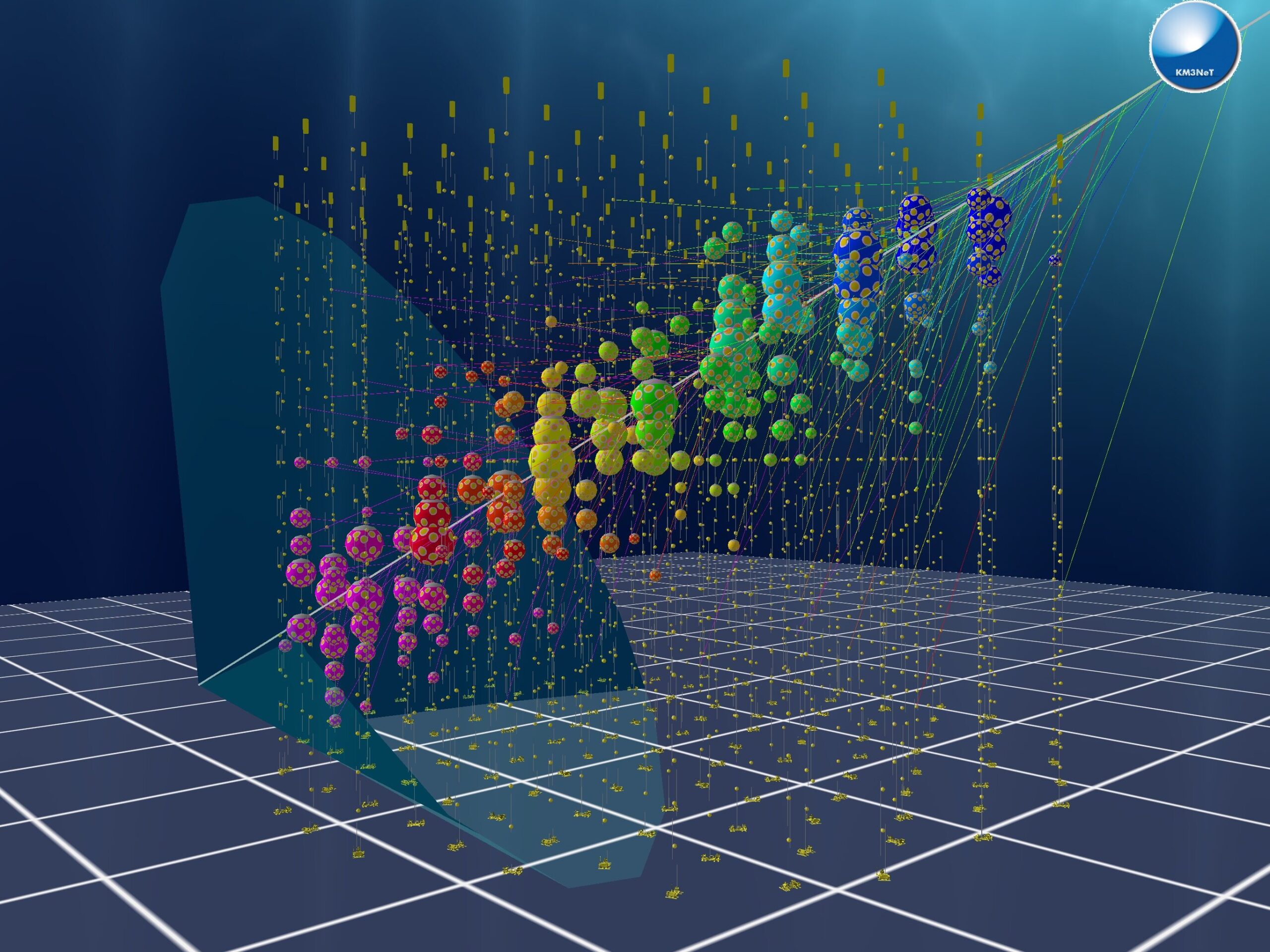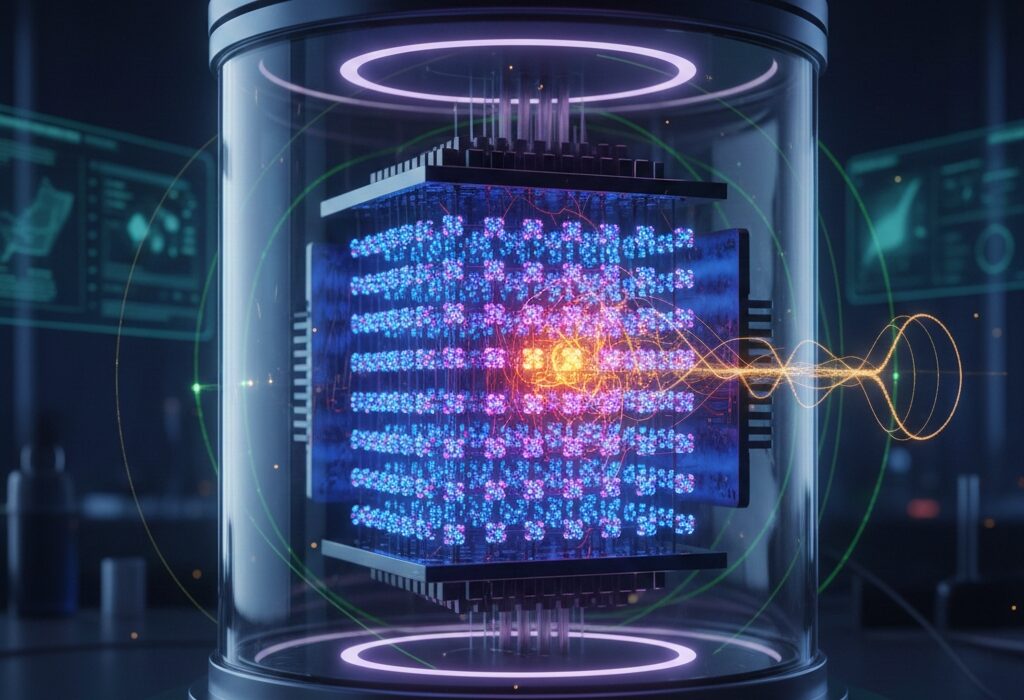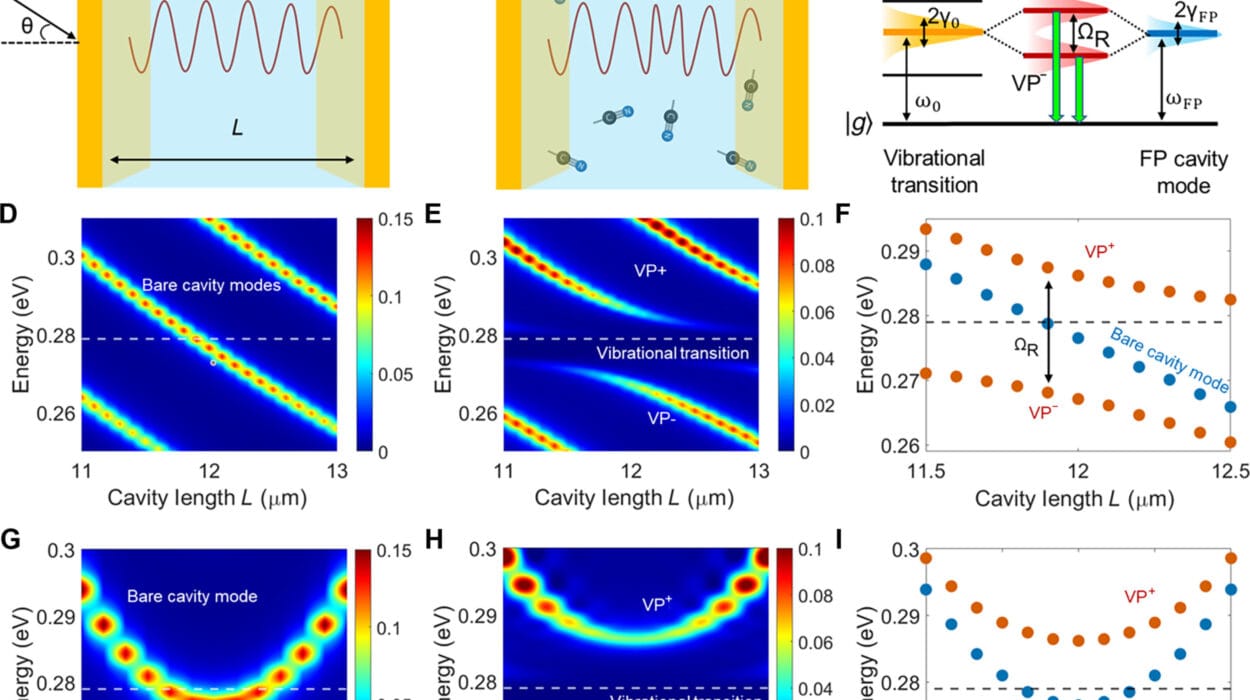Quantum gravity is one of the biggest unsolved mysteries in modern physics. It is the missing bridge between general relativity—which explains the vast, cosmic-scale workings of gravity—and quantum mechanics, which governs the strange, probabilistic behavior of particles at the smallest scales. A theory that unifies these two frameworks would be a “Theory of Everything,” a single set of principles explaining both the infinitely large and the infinitely small.
Despite decades of effort, physicists have yet to crack this puzzle. However, the solution might come from one of the universe’s most elusive particles: the neutrino.
The Neutrino: A Ghostly Messenger
Neutrinos are fundamental particles with almost no mass and no electric charge. Unlike electrons or protons, which interact strongly with matter, neutrinos barely interact at all. Every second, trillions of them pass through your body unnoticed, as if neither you nor they existed.
This ghostly nature makes neutrinos an excellent candidate for studying quantum gravity. If there is a hidden quantum structure to spacetime itself, neutrinos might be the perfect probes to detect its effects. But there’s a problem—because neutrinos rarely interact with anything, they are incredibly difficult to observe.
Catching the Invisible: The Deep-Sea Telescope
While neutrinos typically pass through matter undetected, in rare cases, they can interact with water molecules. When this happens, the resulting reaction emits a faint blue glow, known as Čerenkov radiation. Scientists can use specialized instruments to detect this glow and infer the presence of a neutrino.
One such instrument is KM3NeT (Kilometer Cube Neutrino Telescope), an advanced underwater observatory designed to track neutrinos through their interactions in seawater. This massive detector is buried deep beneath the Mediterranean Sea, where the water acts as both a shield from unwanted background noise and a detection medium for neutrino interactions.
KM3NeT consists of two separate detectors, one of which is called ORCA (Oscillation Research with Cosmics in the Abyss). ORCA, positioned 2,450 meters below the surface off the coast of Toulon, France, was the primary tool used for a groundbreaking new study into quantum gravity.
The Quantum Mystery: Do Neutrinos Lose Their Identity?
Neutrinos possess a strange property called oscillation. Unlike classical particles, a neutrino does not have a fixed mass—it exists as a quantum superposition of three possible mass states. As a neutrino travels through space, it constantly shifts between these identities in a process called flavor oscillation.
This oscillation is driven by quantum coherence, meaning that the mass states remain in sync, allowing the transitions to occur predictably. However, if quantum gravity effects exist, they could introduce a phenomenon called decoherence, disrupting these oscillations.
Decoherence occurs when a quantum system (like a neutrino) interacts with its environment in a way that causes it to lose its delicate superposition. Some theories of quantum gravity predict that as neutrinos travel through space, subtle interactions with the “quantum foam” of spacetime could suppress their oscillations, effectively scrambling their identity before they reach Earth.
A Deep Dive into Quantum Gravity
To test this idea, physicists led by Nadja Lessing at the Instituto de Física Corpuscular of the University of Valencia used KM3NeT/ORCA to analyze neutrinos arriving from distant cosmic sources. If quantum gravity was affecting neutrinos, their oscillations should have been dampened or completely suppressed.
The result? No signs of decoherence were observed.
This finding is significant because it sets new upper limits on the strength of quantum gravity’s impact on neutrino oscillations. In other words, if quantum gravity does alter neutrino behavior, its effects are so weak that they are beyond the current sensitivity of our best instruments.
Why This Matters: The Future of Quantum Gravity Research
Although no evidence of neutrino decoherence was found in this study, the results are still an important step forward. By setting more stringent constraints on how much quantum gravity can affect neutrinos, researchers are gradually narrowing down the possible ways in which gravity and quantum mechanics might interact.
According to Lessing:
“This means that if quantum gravity alters neutrino oscillations, it does so with an intensity below the current sensitivity limits.”
This study also provides insights into future directions for research. If neutrino decoherence exists, more powerful detectors or new experimental approaches may be needed to uncover it. The next generation of neutrino telescopes, potentially even larger than KM3NeT, could push the boundaries of our understanding further.
Why Neutrinos Hold the Key to the Universe’s Deepest Secrets
So far, direct evidence of quantum gravity remains elusive, but neutrinos offer one of the most promising pathways to finding it. Their ability to travel across vast cosmic distances without being disturbed makes them ideal messengers of fundamental physics.
There is a growing consensus in the scientific community that neutrino experiments could eventually provide the first glimpses of quantum gravity effects. Unlike other particles, neutrinos interact so weakly with the universe that any small deviation from expected behavior could be a direct sign of something truly groundbreaking.
As Lessing puts it:
“Finding neutrino decoherence would be a big thing. People researching quantum gravity are very interested in this because you probably couldn’t explain decoherence with something else.”
Conclusion: A Step Closer to the Theory of Everything?
While this latest study found no evidence of neutrino decoherence, it has refined our understanding of where to look next. The hunt for quantum gravity continues, and neutrinos remain at the forefront of this quest.
Each new experiment brings us closer to answering one of the most profound questions in science: how does gravity behave at the quantum level? Whether through more sensitive neutrino observatories, new theoretical insights, or breakthroughs in quantum physics, the pursuit of a unified theory is far from over.
In the vast cosmic ocean, neutrinos continue their silent journey—ghostly travelers from the depths of space, carrying with them the secrets of the universe. And perhaps, one day, they will whisper to us the answer to one of the greatest mysteries of all time.
Reference: Search for quantum decoherence in neutrino oscillations with six detection units of KM3NeT/ORCA, Journal of Cosmology and Astroparticle Physics (2025). On arXiv: DOI: 10.48550/arxiv.2410.01388






